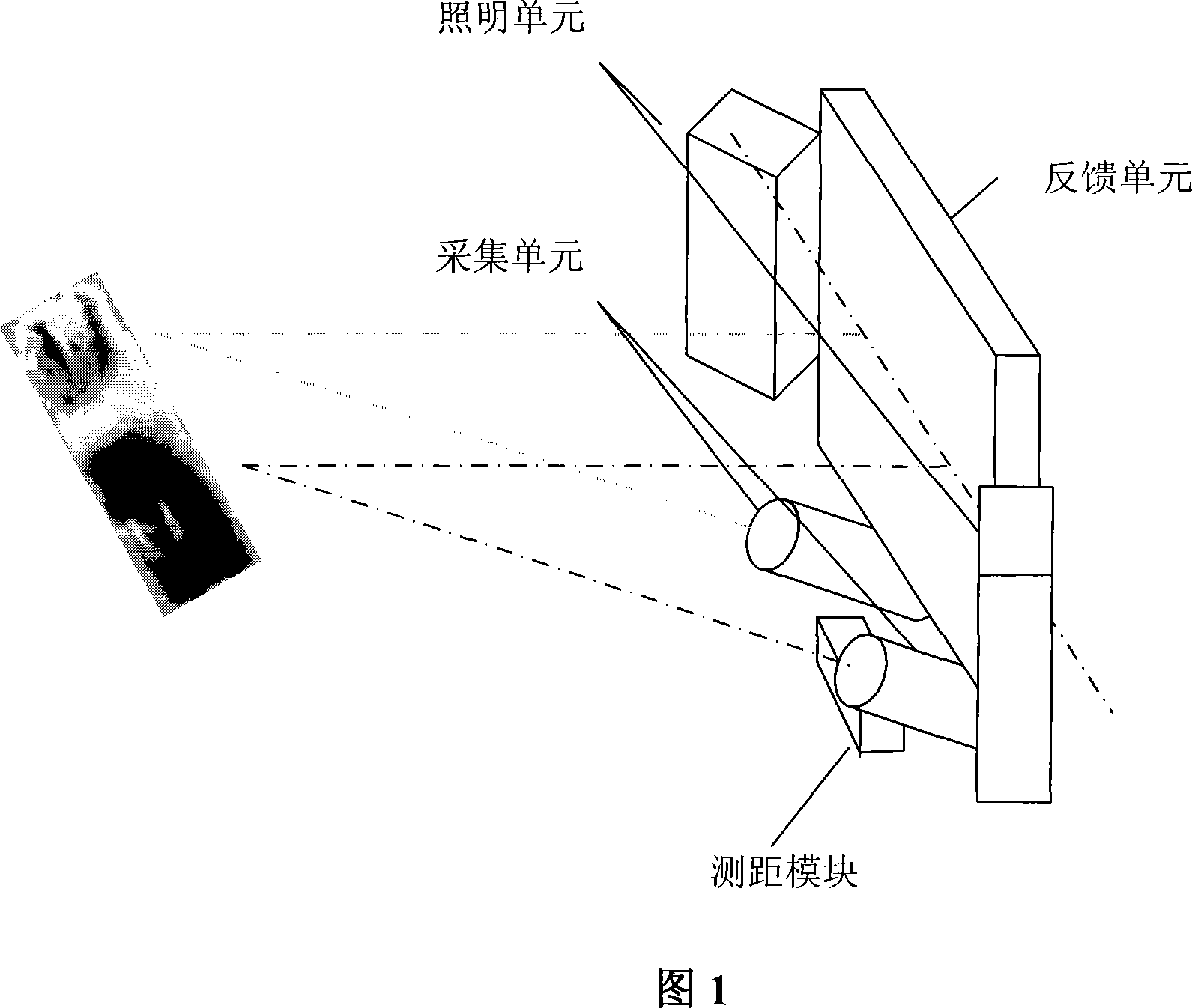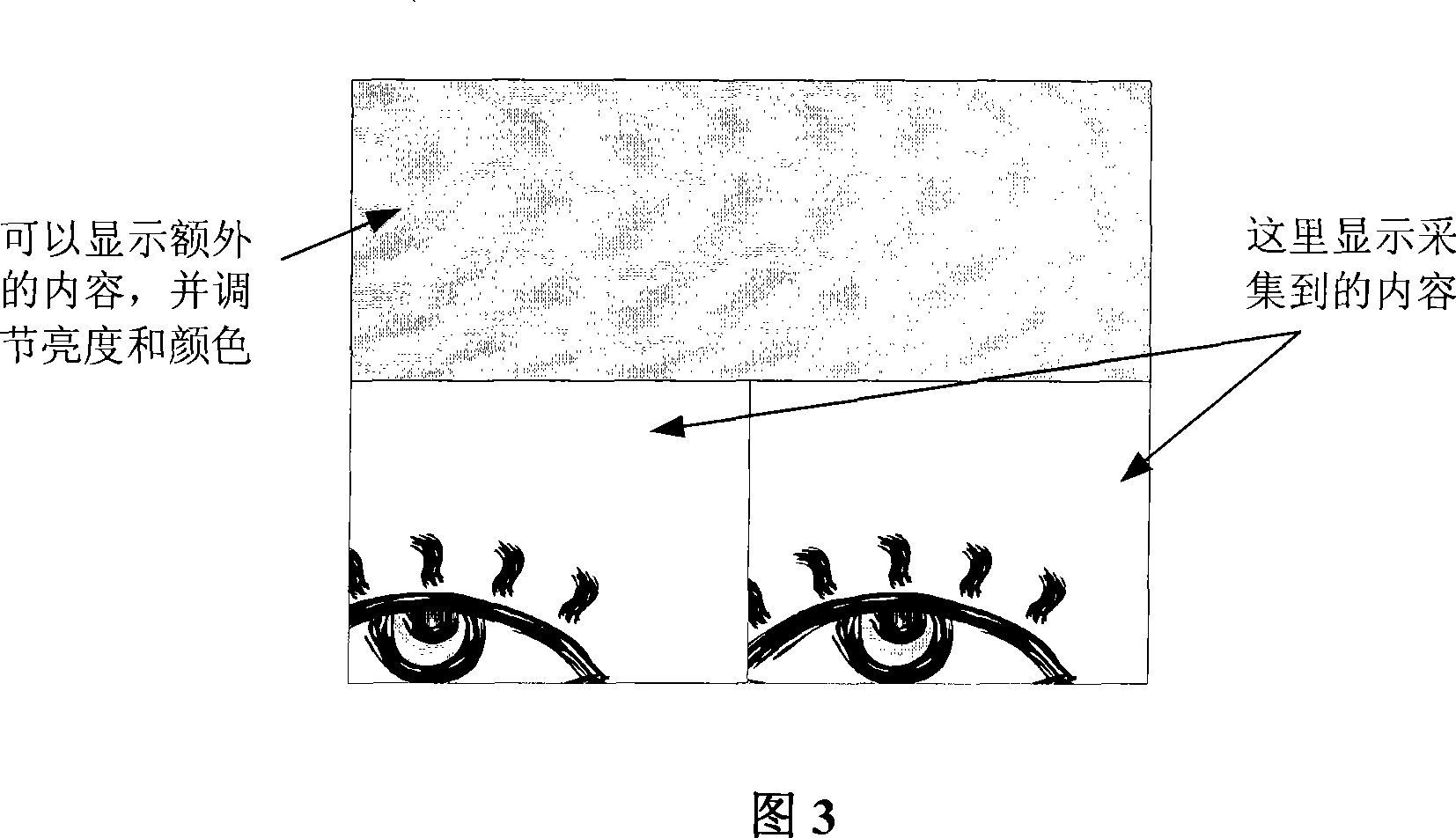Multiple iris collecting device using active vision feedback
A technology of active vision and iris collection, applied in instruments, character and pattern recognition, acquisition/recognition of eyes, etc., can solve problems such as inaccurate information and difficult alignment, and achieve improved recognition speed, improved accuracy, and fast speed Effect
- Summary
- Abstract
- Description
- Claims
- Application Information
AI Technical Summary
Problems solved by technology
Method used
Image
Examples
Example Embodiment
[0022] Embodiment 1:
[0023] FIG. 1 is a schematic diagram of a first embodiment of the present invention. Referring to Figure 1, the lighting unit is located around or beside the acquisition unit to illuminate the iris of the eye. Since the lighting unit has a certain emission angle, the feedback unit has a certain observation angle, and the collection unit also has a certain collection angle and depth of field range. Adjust The optical axis of the lighting unit, the acquisition unit, and the feedback unit can meet the following requirements in a piece of space (called an identifiable space volume) at a certain distance from the device:
[0024] 1. The user can clearly see the feedback displayed by the feedback unit within this range.
[0025] 2. The lighting unit can illuminate the user's iris with suitable energy,
[0026] 3. The acquisition unit can clearly acquire the iris image of the user, and obtain an image that meets the acquisition requirements.
[0027]The devi...
Example Embodiment
[0035] Implementation 2:
[0036] Figure 5 shows a schematic diagram of another embodiment of the present invention. As shown in Figure 1, the acquisition unit is facing the user's eyes, and the acquisition unit is composed of a fixed-focus lens, an infrared-sensing CCD camera, an infrared filter and a transflective mirror. The prime lens has a focal length of 30mm and an object distance of 30cm. The CCD camera adopts N system 600 line-sensing infrared camera, and the output video signal is transmitted to the host through the video capture card. Transflectors transmit infrared light and reflect all visible light. The image of the user's eyes can be captured by the semi-transparent mirror, and the content displayed by the feedback unit will not affect the captured image. The feedback unit is a small CRT display with a resolution of 640*480 and a 90-degree angle to the user's viewing direction. The display content of the feedback unit is projected to the user through the hal...
Example Embodiment
[0039] Embodiment 3:
[0040] Figure 7 shows a schematic diagram of another embodiment of the present invention. In this embodiment, only one set of optical lens and image acquisition chip can acquire the iris information of two eyes. As shown in Figure 7, the acquisition unit is composed of a fixed-focus lens, an infrared-sensitive CMOS camera chip, an infrared filter, a mirror group and a semi-transparent mirror. The semi-transparent mirror in the acquisition unit can transmit infrared light. , while reflecting all visible light. The image of the user's eyes is projected to the reflector, and by controlling the rotation of the reflector, the acquisition unit realizes the time-sharing acquisition of the user's eyes. With the rapid rotation of the reflector, the system's acquisition speed can reach 5 to 10 frames per second for each eye.
[0041] The feedback unit is a small CRT display with a resolution of 640*480 and a 90-degree angle to the user's viewing direction. The ...
PUM
 Login to View More
Login to View More Abstract
Description
Claims
Application Information
 Login to View More
Login to View More - R&D
- Intellectual Property
- Life Sciences
- Materials
- Tech Scout
- Unparalleled Data Quality
- Higher Quality Content
- 60% Fewer Hallucinations
Browse by: Latest US Patents, China's latest patents, Technical Efficacy Thesaurus, Application Domain, Technology Topic, Popular Technical Reports.
© 2025 PatSnap. All rights reserved.Legal|Privacy policy|Modern Slavery Act Transparency Statement|Sitemap|About US| Contact US: help@patsnap.com



